11 Types of Precipitation – Importance, Causes, Processes, Advantages & Disadvantages [Complete Details]
![11 Types of Precipitation - Importance, Causes, Processes, Advantages & Disadvantages [Complete Details]](https://engineeringlearn.com/wp-content/uploads/2023/01/Precipitation-1024x539.jpg)
Introduction
11 Types of Precipitation – Importance, Causes, Processes, Advantages & Disadvantages [Complete Details]: – Precipitation is the falling of water from the sky in different forms and structures. They all structure to form clouds which are raised around 8 to 16 kilometers (4 to 11 miles) above the ground in the earth’s lower atmosphere. Precipitation happens at whatever point any or all types of water particles fall from these elevated levels of the atmosphere and arrive at the earth’s surface.
For instance, precipitation occurs when a part of the atmosphere saturates itself with water vapor and when the right temperature comes it condenses and precipitates. The two processes which make the air saturated are the cooling of air particles or molecules and the addition of water vapor. Frictional drag and gravity initiate the drop to the ground. At the point when a particle falls from the cloud, it creates a turbulent wake behind it, advancing faster and more frequent drops.
Precipitation happens When a solution containing a specific cation (a emphatically charged particle) is combined with another solution containing a specific anion (an negatively charged particle), the formation of an insoluble compound can frequently happen. A precipitate is viewed as the solid that divides.
The (clouds) crystallized ice might arrive at the ground as ice pellets or snow or may melt and change into raindrops prior to reaching the outer layer of the earth depending upon the atmospheric temperatures. Hence, there is a wide range of precipitation to be specific rain, snow, sleet, freezing rain, hail, snow grains, and diamond dust.
Importance of Precipitation
- It is a fundamental part of the water cycle of the Earth. Subsequently, it is necessary for keeping up with the natural balance.
- It is a significant source of fresh water on the earth.
- Precipitation, for example, Rainfall, and its distribution forms a leading feature of the environment.
- It is essential for regulating the global energy flow for example the movement of heat and intensity.
Causes of Precipitation
1. Frontal Activity
Frontal precipitation happens as a result of the slow ascent of air in synoptic frameworks (on the order for cm/s), like over surface cold fronts, and over and in front of warm fronts.
A similar ascent is seen around tropical cyclones beyond the eyewall and in comma-head precipitation patterns around mid-latitude cyclones.
2. Orographic Action
Orographic precipitation happens on the windward (upwind) side of mountains and is brought about by the rising air motion of a large-scale flow of moist air across the mountain ridge, bringing about adiabatic cooling and condensation.
3. Convection
It is the most common cause of precipitation in tropical regions. Convectional clouds fall as showers with rapidly evolving intensity. Convective precipitation falls over a specific region for a relatively short time frame, as convective clouds have a restricted horizontal extent. It is additionally called showery precipitation.
Types of Precipitation
1. Rain: ( Types of Precipitation )

Rain is any liquid that drops from the clouds overhead. Rain is depicted as water drops of 0.5 mm or larger. Droplets less than half a millimeter are characterized as a drizzle. Raindrops most of the time fall when small cloud particles strike and bind together, creating bigger drops. As this process continues, the drops get increasingly big to a degree where they become too heavy to even consider suspending in the air.
Accordingly, gravity pulls them down to the earth. When up high in the air, the raindrops start falling as ice crystals or snow but melt when as they continue down the earth through the warmer air. Rainfall rates fluctuate occasionally, for instance, light rain ranges from rates of 0.01 to 0.1 inches per hour, moderate rain from 0.1 to .3 inches per hour, and heavy rain above 0.3 inches per hour. Rain is the most well-known component of the water cycle and replenishes the majority of the freshwater on the earth.
2. Snow: ( Types of Precipitation )

Snow occurs pretty much every time there is rain. In any case, snow often melts before it arrives at the world’s surface. Snow is normally seen along with high, thin, and weak cirrus clouds. Snow can now and again fall when the atmospheric temperatures are above freezing, yet it for the most part occurs in sub-freezing air. At the point when the temperatures are above freezing, the snowflakes can to some extent melt but because of relatively warm temperatures, the evaporation of the particles happens very quickly.
This evaporation prompts cooling just around the snowflake and comes to reach the ground as snow. Snow has a cushioned, white, and delicate structure and its formation are in different shapes and ways, explicitly flat plates, and thin needles. Each kind of snow structures under specific mixes of environmental humidity and temperatures.
3. Freezing Rain: ( Types of Precipitation )

Freezing rain happens when a downpour falls during below-freezing conditions/temperatures. This regularly results in the solidification of rain droplets. The raindrops are super-cooled while passing through the sub-freezing layer in the atmosphere and freeze when it arrives at the ground. During freezing rains, it is normal to witness an even covering of ice on vehicles, roads, trees, and electrical cables.
The subsequent coating of ice is called glaze and it can build up toward a thickness of a couple of centimeters. Freezing rain represent an immense danger to normal operations of roadways transportation, airplane, and electrical cables.
4. Hail: ( Types of Precipitation )
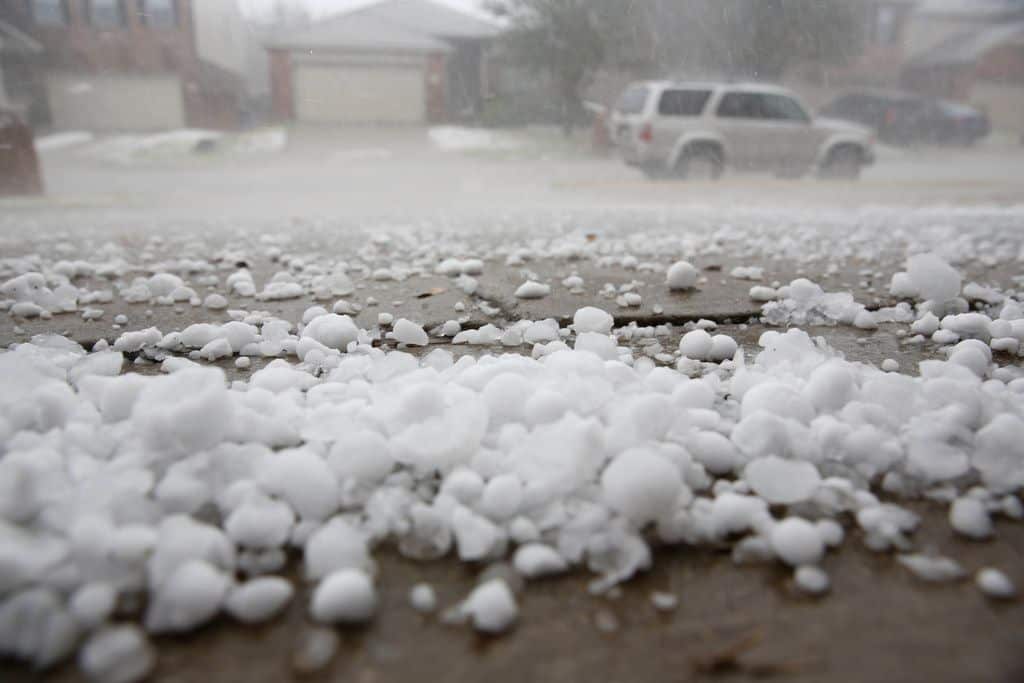
Hailstones are big balls and unpredictable lumps of ice that fall from enormous thunderstorms. Hail is simply solid precipitation. As opposed to sleets that can form in any climate when there are thunderstorms, hailstones are predominately experienced in the colder time of year or in chilly climates. Hailstones are generally comprised of water ice and measure between 0.2 inches (5 millimeters) and 6 inches (15 centimeters) in diameter.
The range is in size of a pea’s measurement to that larger than a grapefruit. For this reason, they are exceptionally harmful to crops, tearing leaves and diminishing their worth. Fierce thunderstorms with exceptionally amazing updrafts typically have the ability to hold ice against the gravitational pull, which brings about the hailstones when they at last get away and fall to the ground.
5. Sleet (Ice Pellets): ( Types of Precipitation )
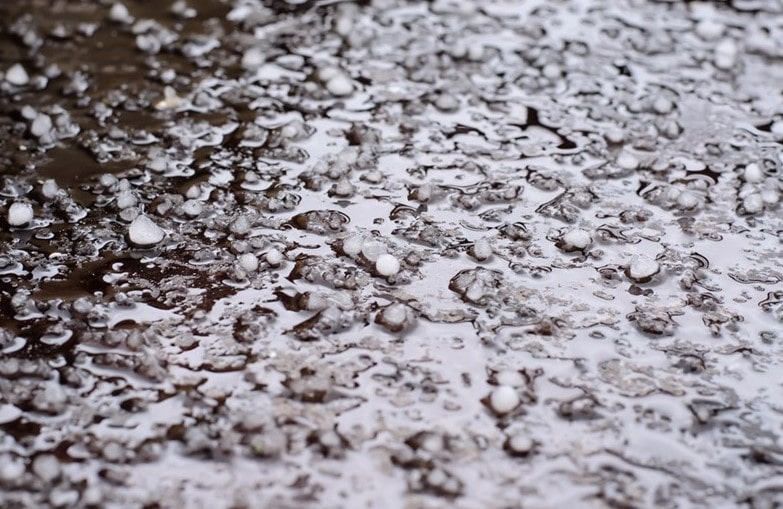
Sleet takes place in freezing atmospheric circumstances. Sleet, otherwise called ice pellets, form when snow falls into a warm layer and then, at that point, melts into the rain, and afterward the rain droplets fall into a freezing layer of air that is sufficiently cold to refreeze the raindrops into ice pellets. Subsequently, sleet is characterized as a type of precipitation composed of small and semitransparent balls of ice.
Sleet is in many cases experienced during thunderstorms and is typically accompanied by frosty ice crystals that form white deposits and a combination of semisolid rain and slushy snow. Ice pellets (hail) bounce when they hit the ground or some other solid objects and fall with a hard striking sound. Sleet don doesn’t freeze into a solid mass except when it combines with freezing rain.
6. Sun Shower: ( Types of Precipitation )
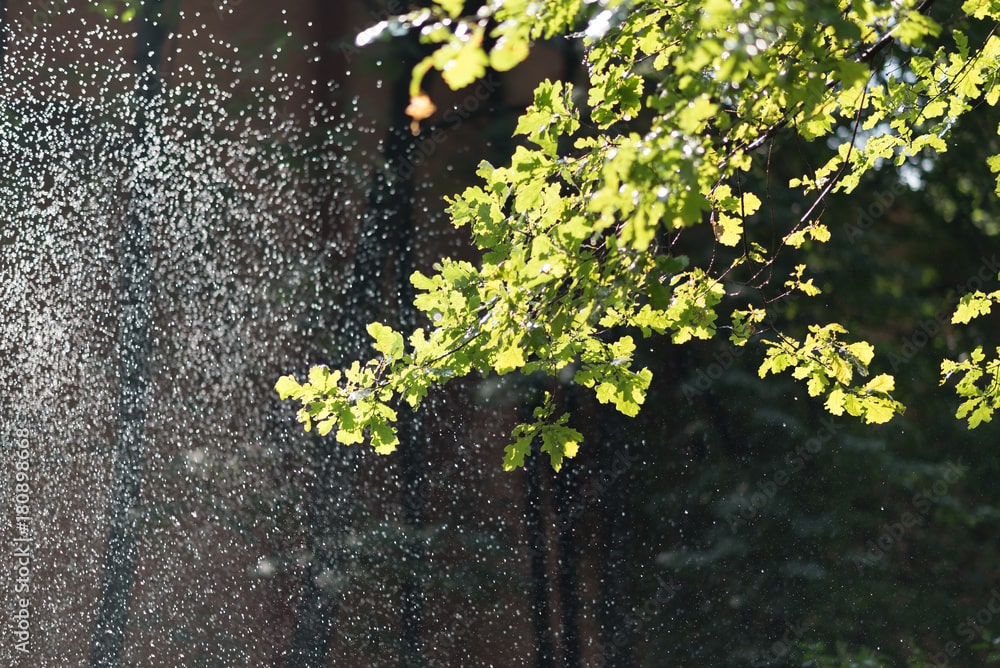
A Sun shower is a precipitation occasion that is registered when a downpour falls while the sun shines. It happens when the winds bearing rain along with rainstorms are blown a few miles away, in this manner leading to raindrops into an area without clouds. Subsequently, a sun shower is formed when a single rain cloud passes over the earth’s surface and the sun’s rays penetrate through the raindrops. More often than not, it is accompanied by the presence of a rainbow.
7. Drizzle: ( Types of Precipitation )
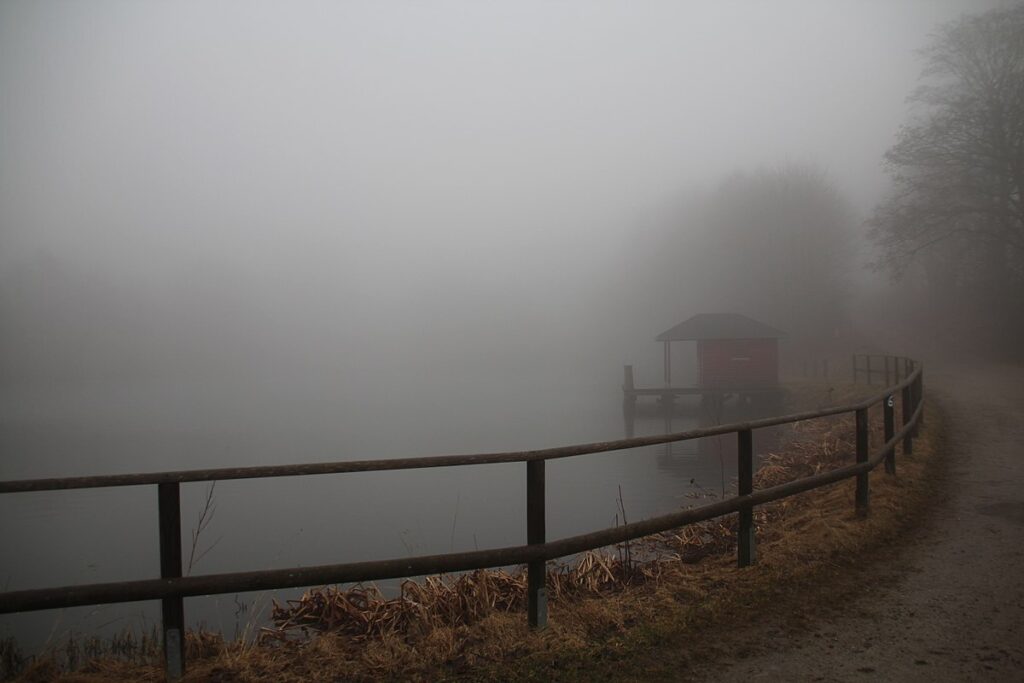
Drizzle is an extremely light downpour. It is more grounded than mist yet under a shower. Fog is a dainty haze with buildup close to the ground. Fog is mainly comprised of ice crystals or cloud water droplets suspended in the air close to or at the earth’s surface. Drizzle droplets are more modest than 0.5 millimeters (0.02 inches) in diameter. They arise from low stratocumulus clouds. They once in a while evaporate even prior to reaching the ground because of their minute size. Drizzle can be persistent in cold atmospheric temperatures.
8. Diamond Dust: ( Types of Precipitation )
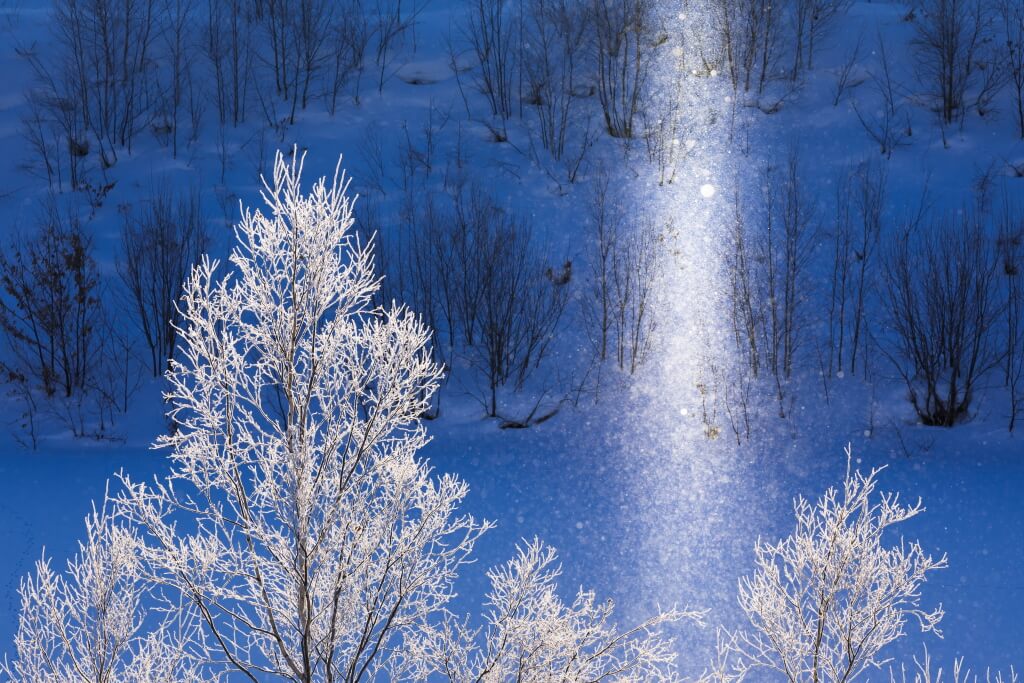
Diamond dust is an extremely small ice crystal typically formed at low levels and at temperatures underneath – 30 °C. Diamond dust got its name from the sparkling effect or impact which is made when light reflects on the ice crystals in the air. Contingent upon the atmospheric conditions, the crystallized ice might reach the ground as ice pellets or snow, or it may melt and convert into raindrops prior to arriving at the earth’s surface.
9. Snow Grains: ( Types of Precipitation )
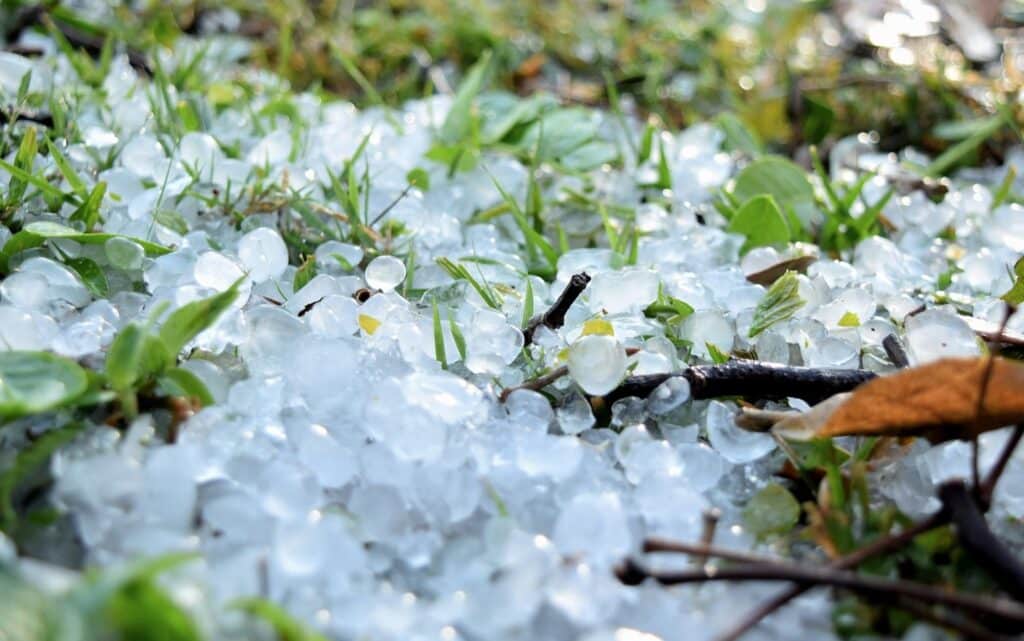
Snow grains are very small white and murky grains of ice. Snow grains are genuinely flat and have a diameter generally less than 1mm. They are practically identical to the size of a sprinkle.
10. Virga: ( Types of Precipitation )
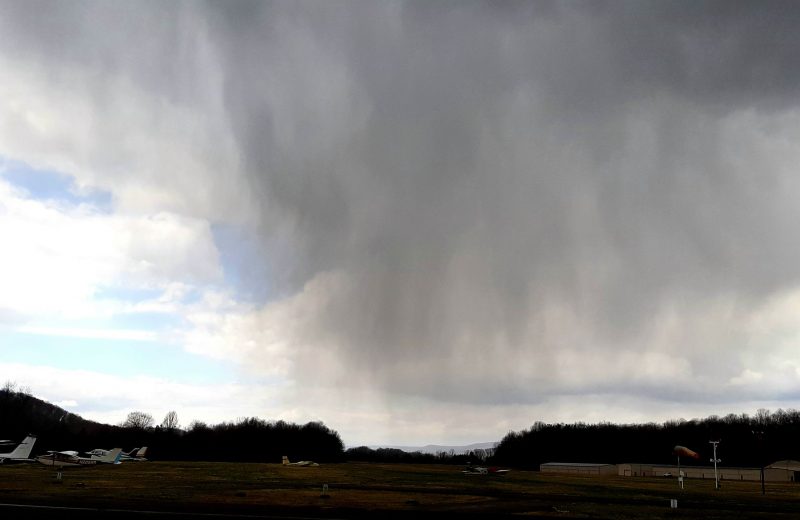
Virga seems to be a strip of rain that descends from the cloud’s base and evaporates before it reaches the ground. Dry or warm air is standing out when rain falls through it.
11. Ice Crystal: ( Types of Precipitation )
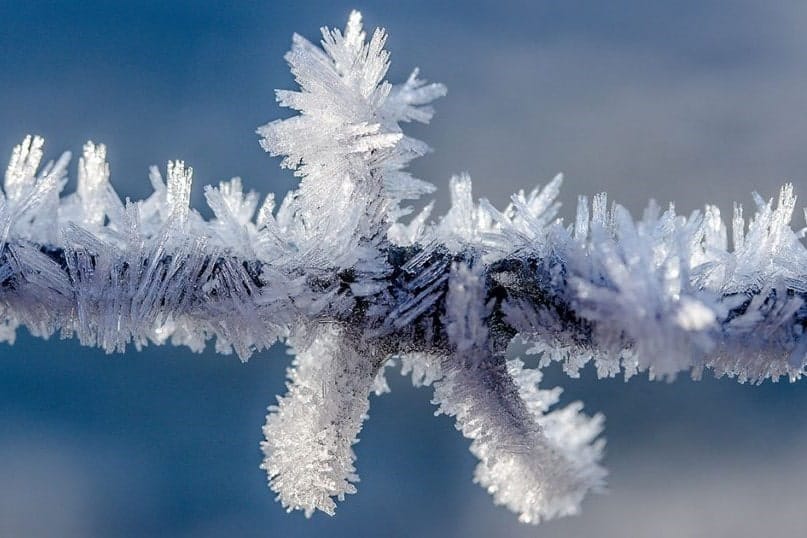
This is a typical occurrence in colder locales of the globe. The crystal seems to be like mist or haze, with water particles freezing into ice. Ice crystals seem to be like needles, plates, or segments in shape.
How Precipitation Occurs in the Atmosphere?
- Precipitation happens when the environment has sufficient moisture. There should be adequate nuclei (salt particles, results of burning, and so on) in the atmosphere to make condensation happen.
- Weather conditions should be ideal for the condensation of water vapor to take place.
- Under favorable weather conditions, water vapor consolidates over these nuclei to form small water drops of size (for the most part under 0.1mm in diameter).
- The clouds are conveyed by the wind while its turbulence assists with holding water droplets in suspension (like particles in a colloidal suspension).
- Precipitation happens when these water droplets come together and blend, forming larger drops of water that can drop down.
- At the point when the precipitation occurs, a considerable part of it evaporates back into the atmosphere.
- Net precipitation at a place and its form rely upon various meteorological factors like temperature, mugginess, wind, and pressure in the region.
What are the Processes in a Cloud that Produces Rain?
A) Bergeron Process
The cloud contains ice crystal and super-cooled water droplets. At the point when an ice crystal collides with super-cooled water, it freezes the water. This technique utilizes two properties of water.
First, property-A cloud’s water droplets don’t freeze at 0°C yet remain liquid until – 40°C named Super-cooled water. Whenever disturbed, super-cooled water will freeze. Consequently, with an increase in temperature, some water droplets will transform into ice. Encouraging the formation of all-ice clouds, a solitary ice crystal is added to a super-cooled water droplet cloud.
Second property-Over ice crystals, is the saturation vapor pressure (es) is lower than over water. Among water and ice crystals, a vapor pressure gradient or slope is made. Ice crystals are formed to the detriment of super cooled water. Exactly when these ice crystals get sufficiently enough, they start to tumble out of the cloud. These ice crystals melt and fall as rain prior to reaching the ground.
B) Collision – Coalescence Process
This strategy or method is suited to clouds whose base doesn’t surpass exceed freezing over. These clouds have perhaps a different measured cloud droplet. Large drops expand to the detriment of additional smaller ones. So they crash with the more modest droplets and form part of it.
Updrafts and downdrafts repeatedly lift and lower cloud droplets in an immense cloud. So these drops develop quickly. Cloud droplets collide to generate the size of a drizzle droplets. More collisions produce larger drops and rain. Small droplets of uniform size might be present in clouds that don’t produce precipitation. A condition like this could prompt colloidal stability in the clouds.
Considering the small size of the droplets, a collision may not occur and these cloud droplets can fall slowly and reliably without colliding. Thus, any clouds that lack the required size of cloud droplets might fail to produce precipitation.
Advantages of Precipitation
1. Human Life Sustenance
Human body needs reliable accessibility of freshwater to assist with supporting its continued existence, which is made available by a lot of precipitation. To disintegrate solids, the human digestive- related system requires water.
2. Hydroelectric Facilities that Power Consistently
Hydroelectric facilities influence an archaic manner of energy generation. They leverage the fluid movement of fast-moving rivers or the gravity of reservoirs to drive colossal wind turbines. Rain outfits all of the water capacity necessary to drive hydroelectric plants, rendering them pollution-free.
3. Spontaneous Freshwater Storage
Precipitation falls to the surface and is soaked into the topsoil, eventually hitting springs in the bedrock. The water table in aquifers keeps up with elevated degrees of concentration of water. Many man-made water wells serve to drink and bathe water by pulling directly from the water table.
Disadvantages of Precipitation
1. Changing Water Quality
Precipitation is for the most part desirable over synthetic agrarian innovations since it eliminates the increased contaminants that artificial irrigation techniques usually incorporate, like chlorine. at the point when a polluted atmosphere yields acid rain, it is severely impeding the climate and human health, and water’s favor are diminished.
2. Driving Risk
One significant disadvantage of rain is that it takes more time to slow down on sodden streets; subsequently assuming individuals are driving as though the roadways are not damp, misfortunes can happen.
3. Extremely Risky Mudslides
When there is a lot of precipitation after a drier season, mudslides can strike, and they can be devastating. They dissolve away rich soil, yet they can likewise possibly damage homes and imperil human existence. They ordinarily happen on slopes, and regardless of whether there aren’t any abodes on the mountainside, there’s the chance of annihilating commotion on the streets, organizations, and homes at the foot.
4. Inconvenience Resulting from Unexpected Downpour
Precipitation might be inconvenient for people who have ventured out from home without appropriate clothing (overcoats, downpour boots, and so on.).
Conclusion
It is essential to realize which type of precipitation the weather conditions will bring as it can perceive you about different things happening in the environment, as well as what you could have to do, such as taking an umbrella or preparing to construct a snowman! Global warming additionally causes changes in global precipitation. At the point when the planet is hotter, more ice evaporates in the air. That at last prompts more rainy precipitation.
Prevailing waves, the presence of mountains, and seasonal waves are the 3 central points that influence precipitation. Mountain ranges are a progression of mountains interconnected by high soil. Where precipitation happens, a mountain range toward prevailing winds can likewise determine. The temperature might influence the precipitation of a chemical reaction. At the point when we increase the solution’s temperature, the solubility of the ionic compound increases. In this manner, decreasing the precipitate formation.
Content Source: – eartheclipse, vedantu, theconstructor, aplustopper
Image Source: – sciencing, localsyr, metoffice, dallasnews, maggioroofing, adobe stock, nasa, snapshot, metoffice, earthsky, sweetwaternow













